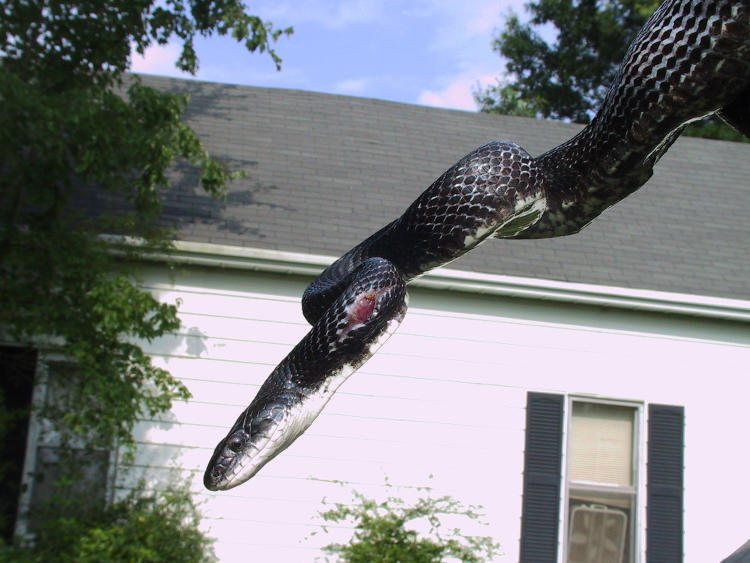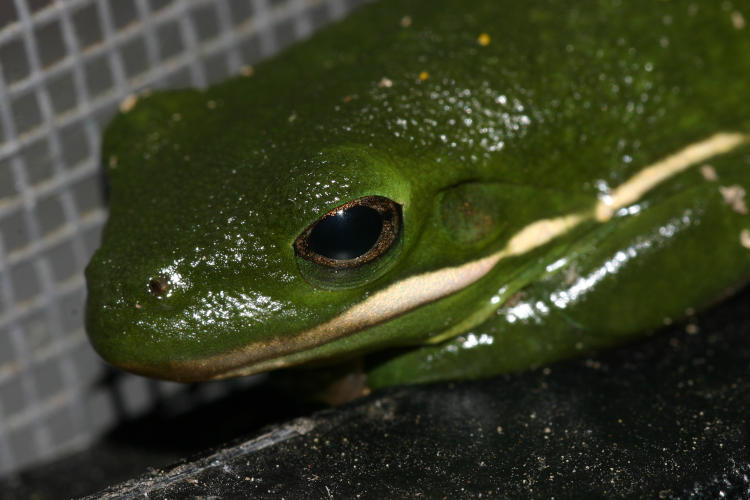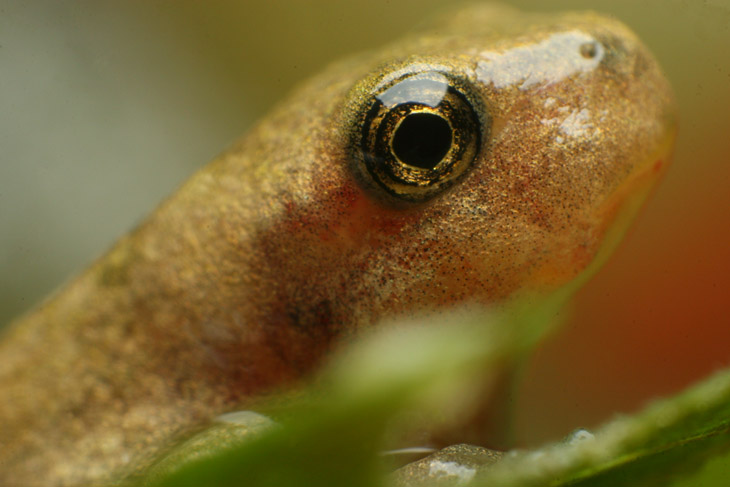Okay, it’s not that bad, but we are gonna go with some older photos here.
Going back through the folders, I found a couple of photos that I felt I should feature, and now I’ve finally got the time and inclination to do so – been buried in a few other projects for a bit. So let’s take a peek at a photo subject from 2005.

I came across this black rat snake, or eastern rat snake (Pantherophis alleghaniensis) in a ditch, showing distinct evidence of a recent large meal – and distinct evidence of an altercation, as well. There were a couple other minor injuries, but this one was the worst. Had it come from the unknown critter now residing in the snake’s belly? It seems plausible, but hardly conclusive; plenty of other species in the area prey on snakes, to say nothing of human hazards. However, there’s a high level of confidence that the injury was there before the snake began swallowing its sizable meal whole, so I’ll let you imagine how it must feel to stretch out such a wound over the passage of a… what? Medium-sized bird? Juvenile rabbit? Large rat? Whatever it was, it was about that size.
As you might imagine, the snake wasn’t the most amenable to being a photo subject.

While not thrilled about the approach of the camera, the snake still recognized that, by itself, it wasn’t a typical threat, plus it didn’t smell right. Had I reached out towards the head at this point with my hand, however, I’m sure I would have been bitten. Black rat snakes are harmless constrictors, with teeth only suitable to helping immobilize prey – tiny little things, capable of stinging and drawing blood, but not much else, and I’ve been bitten more times than I can count. I don’t recall being bitten during this session, but at this point I’m not even sure I would bother retaining that detail. However, I like the comparison of this shot and the much-smaller (like 1/50th the mass) juvenile of the same species from a few days back.
And while I’m at it, another comparison.

This green treefrog (Hyla cinerea) was taken in 2009, a time when I rarely found such subjects, and I was eminently pleased with the detail and sharpness that were captured. In fact, a closer crop is part of the rotating banner images at top – I considered it one of my better accomplishments.
Which is a great illustration of how things change for the better, because now my attitude is, Well, it’s good, but not among the best in my galleries anymore. And that’s the way it should be; if you’re progressing in your skills, you should be able to look at your older stuff and not feel as chuffed about it now. It can help, when you’re not feeling like you’re getting anywhere, to go back and do a direct comparison just to see how wrong you are. But I can show this a little more directly, too.

This is from 2016, one of the various hatchlings from the backyard pond, and that gaping sewer pipe that it hangs from is actually a film can. I realize that this is not the best reference for size anymore, since too few people have even seen one, so just know that it’s slightly larger in diameter than a quarter. My unidentified frog subject here could fit comfortably on a thumbnail, while the adult seen above would be a snug fit within that can. However, I got a little closer than that.

I posted this back then (with specific measurements,) but it’s the same tiny frog – at this age, there are too few identifying characteristics to know if it’s a green treefrog or Cope’s grey, but they’re within the same size range as adults (the greens are slightly larger on average.) Also worth noting is the better lighting control, fewer specular highlights and softer contrast, because not only was I using a lens capable of closer work, I’d created a portable softbox system for my flash unit – actually, several times over in the intervening years, refining them as I went.
I really should have something from the present to show even more comparisons, but I have nothing readily available right now. Maybe I’ll do some microscope work soon.



















































